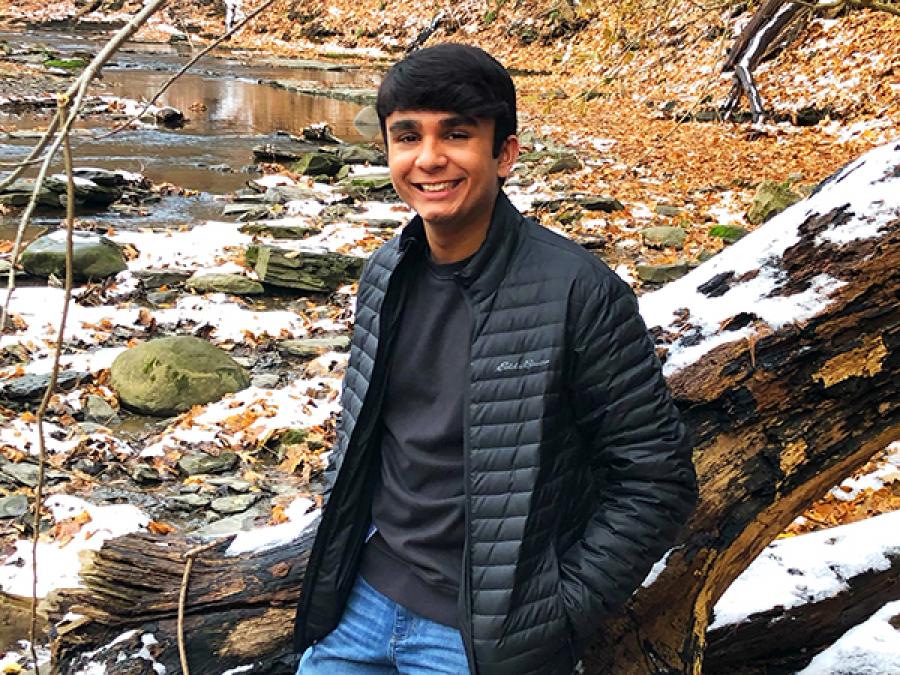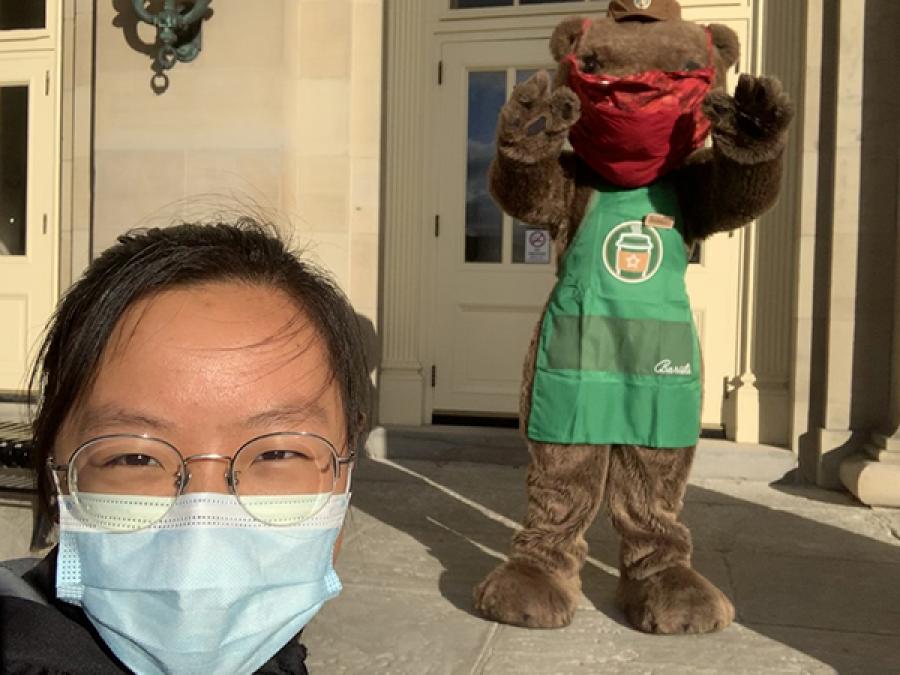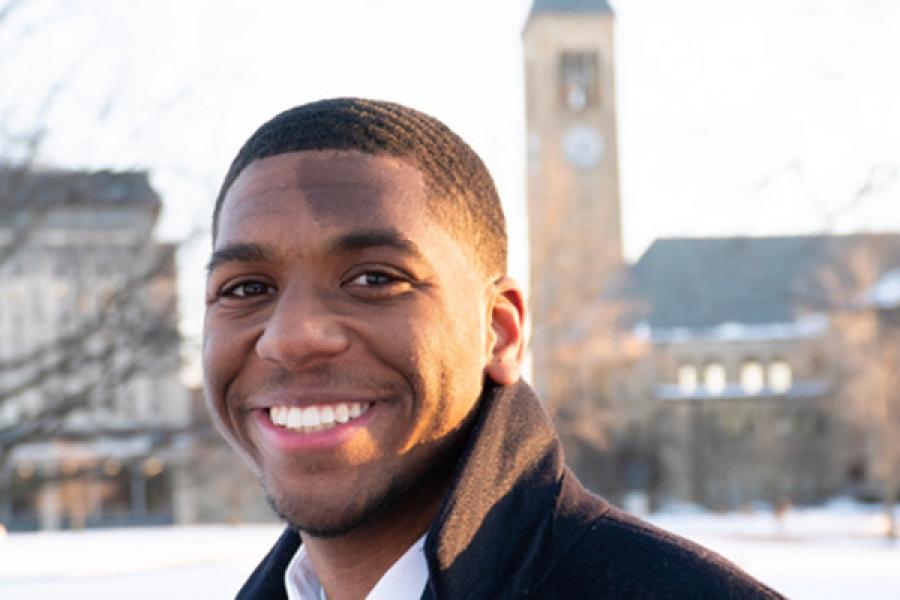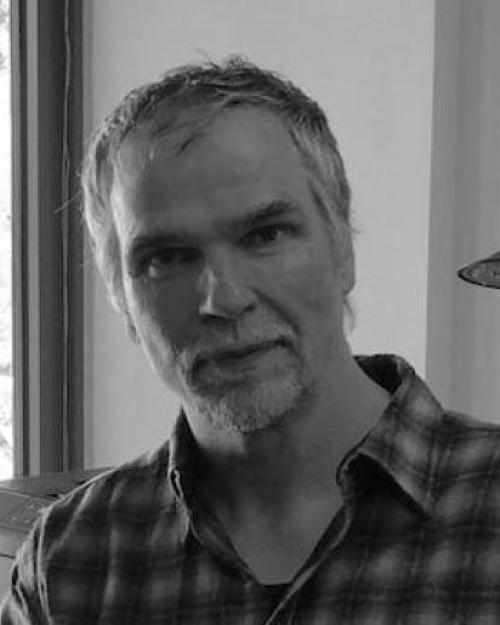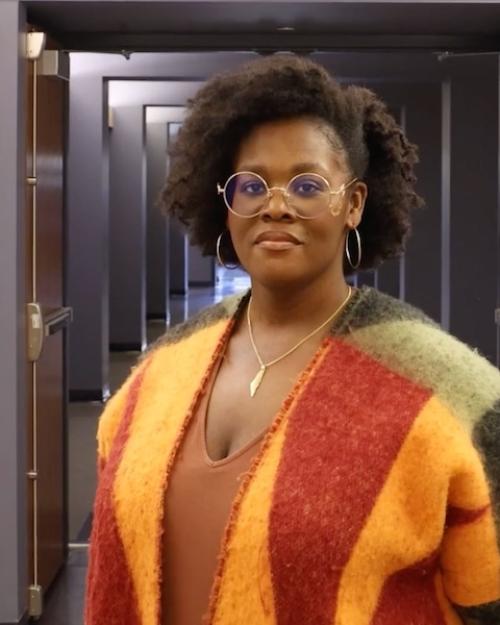Although Viraj Govani ’23 can’t visit the mice in his lab in person this semester, he’s still able to continue moving forward in his research into diabetes and obesity by analyzing data that’s being recorded by grad students.
Shiyu Anna Hu ’22 was planning to travel this year to conduct research for her College Scholar Project. Instead, she’s altered her research topic and is studying relationships between Asians and other minority groups in the U.S., using online surveys.
Laurence Minter ’21, is studying how Black social movements have led to the creation of centers and resources for Black students on college campuses, including Cornell. During the pandemic, he’s had to forego some of his in-person interviews, but he’s been able to check out resource from the Cornell libraries and discover information online.
Ben Shapiro ’22 does get to visit his lab in the Space Systems Design Studio once in a while, where his team is working on a spacecraft they will deploy as part of Cornell’s αlpha CubeSat Mission. But he can also do a lot of his work at home as the project’s public relations staffer, working with artistic and scientific collaborators, establishing media relationships and managing the group’s fundraising efforts, including a Cornell crowdfunding project.
Anna Lifsec ’21 is researching the mental and physical health impacts people suffer when a member of their family is incarcerated. She’s found a network of people through one of her volunteer efforts that is providing a robust number of interview subjects, whom she talks to through Zoom.
All of these students say their research projects have helped preserve their sanity during the pandemic, by giving them a sense of control over at least one aspect of their lives.
“It is one of the few things I feel like I’m doing for something beyond myself,” Hu said. “As a result, being able to delve into my project has made me feel more powerful, and has made my life more meaningful during this uncertain time.”
“It’s actually been amazing to be able to record these interviews over Zoom and then go back and see people’s faces,” Lifsec said. “If I was in person, I wouldn’t have those recordings.”
An interest in health care research
Although just a sophomore, Govani is already involved in two labs on campus, the Cummings lab in the Cornell Vet School focused on diabetes and obesity research and the Design & Augmented Intelligence lab in the College of Human Ecology, looking at how technology and design impact the relationship between people and their built environments.
Before Cornell moved to remote instruction in the spring, Govani was able to spend a few weeks working with the mice in the Cummings lab in person. “I wanted to be involved with living organisms and the mice are cute and also very interesting,” he said. “My family also has a history of diabetes, so I can relate to this work.” Since undergrads aren’t allowed in the lab this fall, he’s been working with grad students on data analysis and papers and conducting journal reviews. For the design lab, he’s analyzing data collected last fall from participants who were outfitted with biometric sensors that collected information as they walked through virtual outlet malls and interacted with various types of signs.
“I’m sad that I can’t go in, but at the end of the day, data analysis is a large part of research and I am still able to partake in that,” he said. “I’m learning a lot about the scientific process and how to deal with problems.”
Brainstorming and working on a side passion project
Since Hu’s original College Scholar idea had to be retooled, she’s spending a lot of her research time reading relevant papers and talking with faculty mentors about conducting an online survey. She’s also begun a side project called HEAL, which helps Chinese international students like herself deal with the mental health challenges of the pandemic. That project was recently accepted into the eLab student accelerator.
Hu said both of her projects could positively impact others, giving her a sense of purpose.
Her research is focused on the ways that minority members perceive and categorize other minorities. Psychological theories hold that people put others in categories and hold strong preferences for people who are like them, Hu said. But Hu hopes to study what influences people's categorizations and what could make them take action to be helpful or supportive of people not normally in their group.
The HEAL group, which provides a peer-to-peer chatting service in Mandarin, came about when Hu realized that some of the counseling services available weren’t culturally sensitive to Chinese students. “Chinese international students are not that willing to go deep to focus on their emotions and they use different type of expressions in these conversations,” she said. “We provide a friendly person who can listen to them express their thoughts. It’s more like an outlet for them.”
Using Cornell as a case study
Minter, a sociology major and a Mellon Mays Fellow, has found a disconnect between his work studying how institutions respond to social movements and how the university has reacted to the COVID-19 pandemic.
“There’s been constant communication, a lot of receptivity to student concerns, town halls, surveys and opportunities for your voice to be included,” he said about Cornell’s pandemic safety plan. “Health and safety is the top priority now and that has also been the case during the history of social movements on campus. There have been times when our health and safety wasn’t protected, so that’s literally what we’ve been pushing for.”
Minter’s been studying various structures, organizations and centers at Cornell – Wanawake Wa Wari Cooperative, Ujamaa Residential College and the Africana Studies and Research Center among others – and how their emergence came about in part because of social movements.
From early research and literature reviews, Minter has now moved on to studying Cornell Daily Sun archives and library resources about Cornell events, including the Willard Straight Hall takeover in 1969. He also plans to conduct phone or Zoom interviews with students, faculty, staff and administrators involved in social movements at Cornell over time.
“We have a lot of amazing history at Cornell, but there are still areas for growth and ways that Cornell could do better,” he said. “Having structures like we have is a safety net for students, so I’m using Cornell as a case study for what other institutions can and should adopt.”
An aspiring space entrepreneur
Shapiro’s childhood watching the skies while he rode ferries in the Virgin Islands helped to inspire his love of space. But his interests lie more with the commercial, economic and psychological aspects of space exploration and development. He thinks about questions such as: What will the currency be in space? How can humans deal with climate issues in space? How will we store and manage power in space? What kinds of scientific developments can facilitate the next generation of space exploration?
While engineering students on the αlpha CubeSat team are the ones building the satellite, scheduled to launch in August 2021, Shapiro has been closely involved with other logistics: managing a “dress rehearsal” of a stratospheric balloon launch of the satellite’s light sail with the Cornell Radio Club and working on a campaign to let the public decide which holograms, created by an artist, will be attached to the spacecraft.
“When Carl Sagan conceptualized the Voyager Golden Record (in 1977) it was an opportunity for introspection, a time for us to think about what makes us human,” Shapiro said. “Why not do that again?”
Shapiro is also working with classmates he met this summer during studies at the International Space University on a proposal for NASA’s Watts on the Moon challenge. The challenge encourages innovators to think of ways to manage power on the moon.
All of his projects have helped Shapiro manage current uncertainties.
“Not only do we have team projects to focus on, we also have developed a deep appreciation for each other as coworkers and friends,” he said.
A quest for prison reform
Lifsec’s semester has been a busy one, as her volunteer work with the Parole Preparation Project resulted in the release in November of a man who had served 28 years in prison. That work connected her to a group of people who are helping her complete her College Scholar research project, as well, on the impacts of having a family member incarcerated.
She started working on her research idea as a freshman, helping a professor on a survey that uncovered that 50 percent of Americans have an immediate family member who was incarcerated. That survey of 4,000 people contained two questions on mental and physical health, so Lifsec started with that data. She has continued to read other articles and research related to the issue, collect data about health and economic impacts of incarceration and interview family members.
Lifsec sent an email to a parole Preparation Project listserv and was floored by the number of responses from family members eager to share their stories.
“It was clear from the research that having a family member who has been incarcerated has negative physical and mental outcomes for families,” she said. “What’s not known is how far reaching those effects are and how they materialize in a person’s general well-being.”
